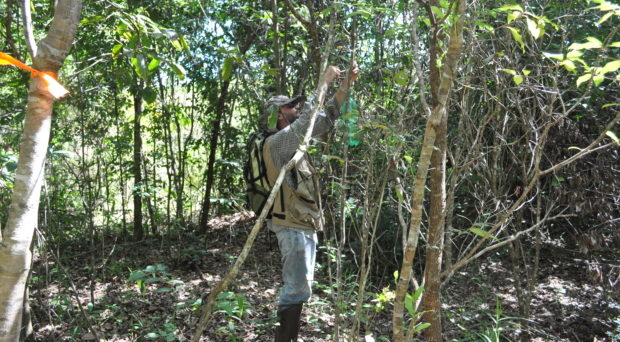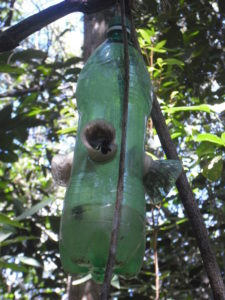
Why do we need bees?
Along with its contribution to crop production of approximately 35% of all food in the world, animal pollination also maintains viable populations of native plants and guarantees the viability of several agriculture enterprises throughout the world. Among all pollinators, bees are the most important ones, either because of their diversity ways of life or because of the species diversity itself. These insects are very important to agriculture because they increase the yield of different crop plants, such as coffee, tomato, and sunflower.
Why bees are in danger?
The conservation of this insect group is attracting a considerable public concern because human activities are believed to cause significant population decreases in several different bee species. The habitat loss and fragmentation caused by agriculture intensification, the increased use of chemical defenses and the introduction of foreigner parasites are believed to be the main causes of bee decreases worldwide. Additionally, synergetic interactions between all these issues are also believed to be causing the pollination crisis reported elsewhere. On the other hand, our dependency on bee-pollinated crops has significantly increased lately, and this may cause a pollination debt in the near future.
Our case study: landscape changes and Euglossini bees in Brazil

With the above problems in mind, we aimed to evaluate the effects of landscape changes in the populations of two Brazilian Euglossini bees, Eulaema nigrita Lepeletier and Eufriesea auriceps Friese. The Euglossini bees are endemic to the Neotropics, very diverse (~250 species were already described) and related to forested areas. The males of these bees have a peculiar behavior: they collect flower scents to allegedly improve their pheromones and attract the females. Specifically considering these two species, but mainly E. nigrita, they are very generalist species, being able to be very resistant to environmental changes. In fact, E. nigrita abundances were already reported to increase in occurrence of anthropogenic disturbances. Since this species pollinates several different plant species, we expected them (mostly E. nigrita) not being affected by the landscape changes in the Brazilian Cerrado. Additionally, as this biome is naturally an opened habitat that naturally favors these species. Therefore, we expected that their abundances would not be much affected by the landscape changes.
Given their biological and ecological features, we sampled these bees in several areas in the Brazilian Cerrado to evaluate whether their populations were being affected by landscape changes, such as habitat loss and fragmentation in this biome. We sampled from several landscapes in this Brazilian biome and also measured the amount of fragmentation within each landscape, in an attempt to relate such changes with the species abundances in each sampled landscape. As expected, both of these species did not show any response to different landscape metrics measured. Still, we believe that for Euglossini bees with small body sizes, landscape features may still pose as important determinants of population sizes in the Neotropical region.
Good news for Euglossini bees in Brazil but how about future?

Of course these results do not indicate there are no menaces to bees in the Brazilian Cerrado savanna. These results only indicate that both of these Euglossini species are well-adapted to the environmental changes induced by humans and, consequently, did not show too much responses to the landscape changes. However, considering Euglossini bees from both Atlantic and Amazonian regions, deforestation, fragmentation, and habitat loss are indicated as pervasive ecological issues to bees. Even though the Euglossini fauna within the Cerrado may provide some protection to animal-pollinated crops, agriculture intensification of the ongoing and increasing application of agrochemicals pose as important and significant threats to bees in general and are expected to greatly affect pollination debt in the future. Since even generalist species may be negatively affected by these threats, pollinators-friendly actions done by farmers in general within their lands (i.e. maintenance of natural vegetation to serve as refuges for the bees, decrease in the amount of chemicals used etc.) are expected to help bees to strive in their natural remaining habitats. Otherwise, bee population decreases throughout the world are expected to continue significantly affecting the pollination debt and the potential economic losses regarding insect-pollinated crops.
Read full article: No Evidence of Habitat Loss Affecting the Orchid Bees Eulaema nigrita Lepeletier and Eufriesea auriceps Friese (Apidae: Euglossini) in the Brazilian Cerrado Savanna
Daniel de Paiva Silva
Latest posts by Daniel de Paiva Silva (see all)
- Natural pollination, bees and common threats - 29th September 2016